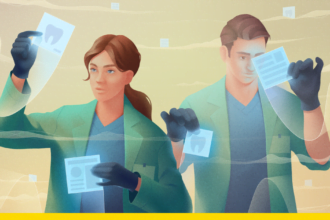 Electronic Health Records (EHRs), care coördination and telemonitoring help to lower the rate of hospitalizations for diabetic patients. These technologies combined can lower the rate of hospitalizations by 26% within a three-year period, according to research by Western New York Beacon Community Project.
Electronic Health Records (EHRs), care coördination and telemonitoring help to lower the rate of hospitalizations for diabetic patients. These technologies combined can lower the rate of hospitalizations by 26% within a three-year period, according to research by Western New York Beacon Community Project.
 Electronic Health Records (EHRs), care coördination and telemonitoring help to lower the rate of hospitalizations for diabetic patients. These technologies combined can lower the rate of hospitalizations by 26% within a three-year period, according to research by Western New York Beacon Community Project.
Electronic Health Records (EHRs), care coördination and telemonitoring help to lower the rate of hospitalizations for diabetic patients. These technologies combined can lower the rate of hospitalizations by 26% within a three-year period, according to research by Western New York Beacon Community Project.
“Out of those 57 practices, 50 percent reported that the overall percentage of uncontrolled diabetic patients was down 5 percent, and 25 percent of practices reported decreases of more than 10 percent in the number of uncontrolled diabetes cases.”1
This means in 2012 three hospitalizations were prevented for every 100 diabetes patients, which represents a savings of some $600 per diabetic patient, per year. So this raises the question: “Why wait with telemonitoring?”
Patient story
Kenneth Wilson was one of these patients. He had been living with uncontrolled diabetes for more than ten years, but when he enrolled and had to log into the program each day and measure his weight, blood pressure and blood glucose levels, he eventually saw some big changes.
Before being enrolled, his A1C levels – a number measuring average glucose control – ranged from 8 to 9 percent. Since participating in the pilot, Wilson has reported average A1C levels of 6.8. Similarly, before the pilot, Wilson’s morning blood sugar level ranged from 180 to 240 mg/dL. Now, the level stays typically around 109 mg/dL.
“The benefits were tremendous,” Wilson said in a video commending the program. “They’d call every day … saying, ‘I heard you had some kind of issue today. You got this going on, or you got this going on. What’s the story? What can we do to help you?’”1
I am amazed by what these different measurements can mean for patients. What I’d actually like to see is how they show the results to the users of this project. Correct feedback for the patients/users of the telemonitoring solution is very important. I’d like to get your opinion on “Why we should wait with telemonitoring?”
(telehealth / shutterstock)








